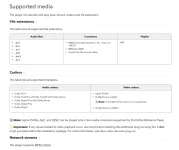I know i am likely in the very small minority of folks who will ever notice this but wanted to share my experimental results in case anyone else wanted to dip into hifi.
As background, I've invested in a full aftermarket build of my Lucid Air's sound system with top of the line components and custom tuning.
Details here for background:
https://lucidowners.com/threads/luc...lity-configuration-of-the-factory-audio.4647/
Since I've had this system for a while I started playing around with Tidal, Qobuz, Carplay, and USB audio.
Here are my observations. (Happy to share my experimentation methods if anyone is interested)
1.) The native Tidal App for Lucid I think is bitrate limited even if you set it for Hifi. I think this is a limitation of the bandwidth allocated via the onboard cell modem of the car. Or if not the modem, it's the contracted bitrate that Lucid pays the cell service provider. In my estimation it's capped at 320 kbps. This bitrate limits exists for both stereo and Atmos.
2.) If you use Carplay + Tidal or Qobuz set to stream at CD quality audio (16 bit 44 khz) you will get a noticeable improvement in source quality over the native tidal app.
3.) If you try to stream Hi-Res (24 bit) from either source, it consumes a ton of cell bandwidth, but you don't hear a difference over CD quality stream (This is a carplay limitation which is capped at 16 bit audio, which is strange since wifi has plenty of bandwidth to support such a stream)
3.) A Ripped CD onto USB in FLAC format that's 16 bit 44 Khz sounds more detailed than the Carplay + Tidal or Qobuz stream or equivalent quality. While on paper it's the same, I think Carplay does something \, perhaps downsampling the audio or there's some software limitation over carplay.
4.) My latest experiment: Downloading HiRes (24bit audio + various sampling rates) from Qobuz encoded on FLAC onto a USB shows another jump in detail (although this jump is very subtle compared to 320 kbps -> Cd quality which is more like 720 kbps when compressed)
I suspect those with the stock SSPro system could hear the difference between the native tidal app and carplay + tidal streamed at 16 bit CD quality, but never tested it myself (someone should try it)
Note: Carplay w/ tidal does not support Atmos formats. So using carplay would be for stereo only.
I doubt the stock SSPro system would show any improved detail on 24bit audio over 16 bit audio but once could try and find out.
Anyone else play with Audio sources and can tell the difference?





